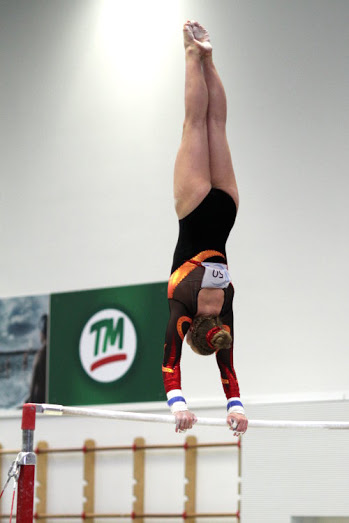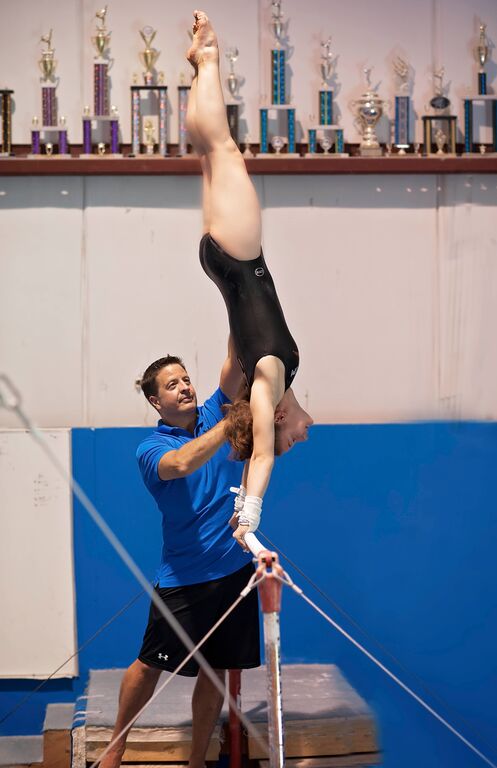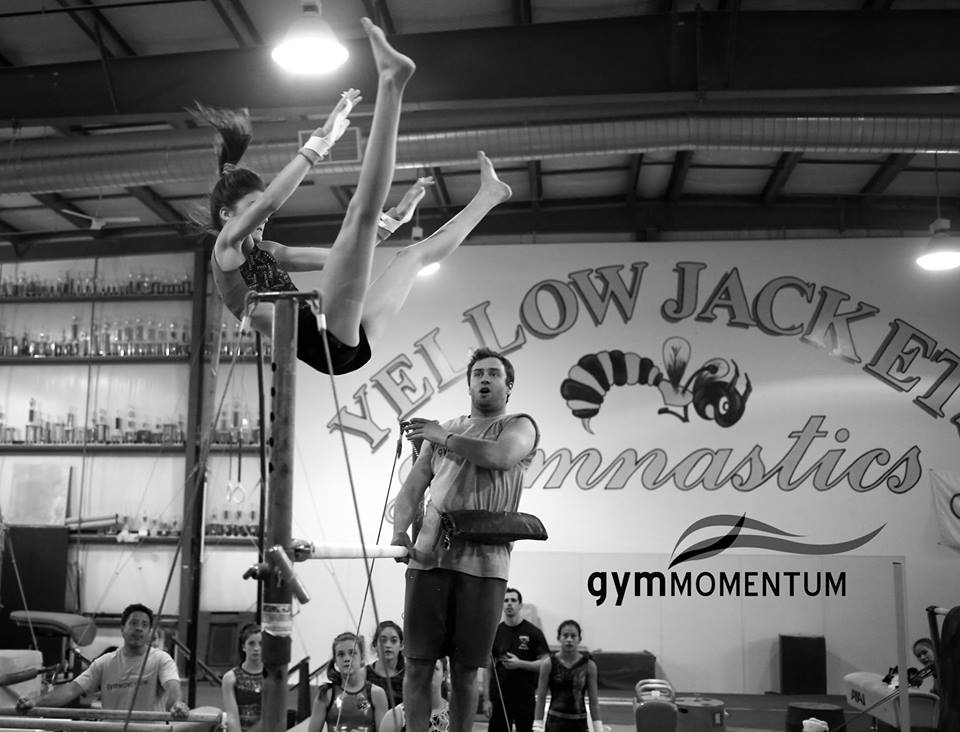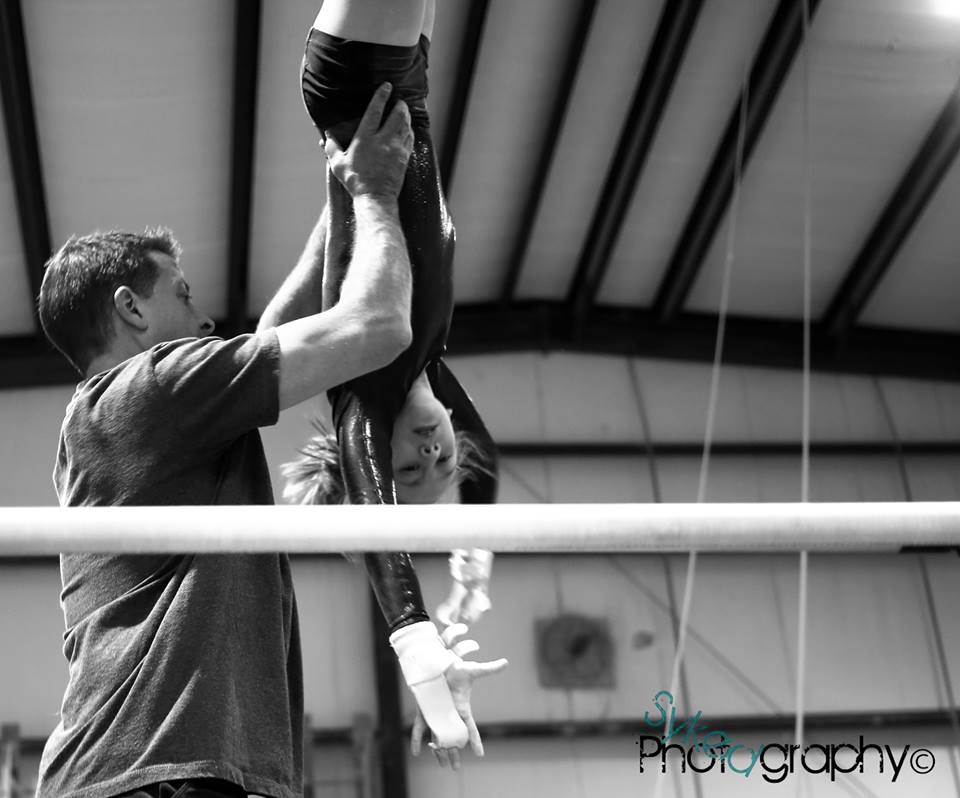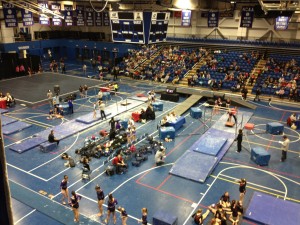Developing a Plan for Uneven Bars
If you are going to be successful at coaching bars, you need a plan. Every gymnast is going to be a little different, every group of gymnasts you have will be different from past groups. Knowing this, when you create your plan keep it general. You will fill in the specifics later based on the needs of individuals. There can be no generic plan. I think the best way to get an idea for YOUR plan is an example of what goes in to mine.
I will be posting a few of my favorite drills for all of these skills in the near future BUT It must start with a plan.
Let me know your thoughts and share your favorite drills
The 18 Month Rule.
Once you get past Level 3, you need to make sure that your gymnasts stay about 18 months ahead with the skills they need for the future. (They should be about twice that on floor!). I have been in gyms where it took nearly the entire bar workout to get the gymnasts through their routines. Dividing my bar workouts into thirds.
- Routine work and specific conditioning.
- Problem Parts and drills
- New skills and combinations
I like to make sure is that the gymnast gets their dismount first. They should have a dismount that they can compete and a dismount that is in their training routine. My reasoning is that if they are comfortable with their dismount, they can focus on the other elements in their routines. As they go into competitions their routine will be newest skills to oldest skill.
Fly Away
I teach fly aways with little kids (level 3) on low bar. Why? Because they are little and light! I do NOT teach tuck flyaways. I go right to layouts. My theory is that a body will follow its feet. If they tuck their feet are CLOSER to the bar. Most kids are afraid of kicking the bar. You might as well teach them to swing up and away in a layout.
- Swing to flyaway
- Cast to flyaway
- Clear hip (or Toe on HS) to Flyaway
- Giant to fly away
A gymnast should be able to do a fly away from all 4. You never know when or how they will need it in the future.
Front Fly away
I teach this and let them do it alone over the pit pretty young. Reality is that when they are learning this they are falling faster than flipping. They are getting comfortable with a front flip. Most gymnasts do not swing hard enough so many will do a pike or ugly tuck. This doesn’t make me happy but I do not worry about it too much.
Cast Handstands
We all agree that cast handstands take a HUGE amount of time. We spot these (or should) everyday. Hundreds if not thousands of repetitions. I like to introduce the cast to handstand as early as level 3. While I am teaching cast handstands I teach a 1/2 pirouette at the same time. Many beginner optional gymnasts have a lot of fear with falling over the bar on cast handstands. So I teach a pirouette at the same time. If they are comfortable with falling (and turning) they will go for it harder. It takes countless repetitions. Be patient.
Inbar skills
The next thing we spend a lot of time coaching and spotting on bars are inbar skills. For most of the gymnasts that is clear hip circles and toe on handstands. I start every gymnast with clear hip circles but move to toe on handstand pretty quick. I feel that I can spend 80 hours working with a group of 10 gymnasts and get 1 really good clear hip circle (but still with some inconsistency) and maybe 2 other with reasonable clear hip circles. 2 more that occasionally make it to handstand and the rest really struggle with form, handstands etc. Spending the same amount of time on Toe on Handstands I have found more success and those gymnasts transition more easily into stalders.
- Clear hip
- Toe on handstand
- Stalder Endo
- Inside stalder Inside Endo
Giants
This skill is often looked at as the make or break skill for many beginner optional gymnasts. You need it to be competitive at Level 7 and it really is a must for all advanced skills that come after that. I have always tried to teach front and back giants at the same time. Many of the drills are the same. It is important with front giants to also teach a “beat tap” as opposed to an uprise tap. With out this tap the gymnast will struggle with Jaegers or double fronts. If a gymnast does not front giant they will never be totally comfortable with pirouettes.
When learning giants I want the gymnasts to be comfortable swinging in all grips (over grip for back giant. Under grip and “L” (eagle) grip for front giants) and facing both directions.
Turning Giants
Once a gymnast can front giant (with spot) I want them to begin to pirouette (blind changes and higgens). This is nearly simultaneous. I want the gymnasts to be relatively free from fear swinging in under grip before they blind change. If they know what is going to happen going over the bar when they pirouette and what their body is going to do under the bar, they will be more comfortable in doing the pirouette. REMEMBER to teach a gymnast how to pirouette OUT of their front giant and how to FAIL. The more comfortable they are, the more aggressive they will be in their tap and the more willing they will be to experiment (play) with new skills.
Release Moves The Big 3. Jaeger, Tkatchev, Gienger.
I start everyone with drills for Jaeger and Tkatchev. Those 2 share a lot of the same drills and the hecht action is necessary for the toe on “hic-cup” to high bar.
The Jaeger is my current preference to push early because I think it may be the most difficult and therefore takes the longest to learn. If a gymnast has a blind change to Jaeger they have at least +.2 in bonus and fulfill 3 special requirements in that they turn, they have a release move, they are in under grip.
The Tkatchev as I stated shares many of the same drills as Jaeger and helps in other skills. This needs to be viewed as a BASE in that there are SO MANY skills that use that action (Hic-cup, Tkatchev, Maloney, Ray, Shaposhnikova, Hindorf, Kim, etc). A Tkatchev also has a fairly large margin of error and still be able to catch.
Gienger- I have been pretty successful teaching kids this skill but I view it more as a skill for the right gymnast. One who has a big “floaty” flyaway.
PAK/ OVERSHOOT
At the JO level I think many gymnasts have an easier time with a Pak because they can set the bars WIDE and have the low bar higher than FIG which helps hide some of the common problems. Although I do NOT think the skill itself is that complicated, keep in mind that most gymnasts are going to need to Kip cast 1/2 pirouette out of it. If you have a gymnast who struggles with pirouettes, you may want to teach an over shoot.
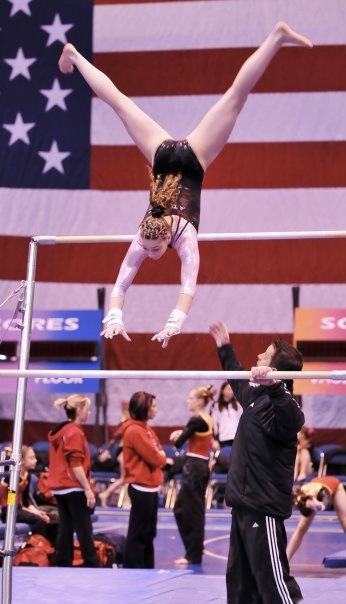
I teach overshoots and Paks at the same time and then see which is best for which gymnasts based on their fear and potential.
This is the first in a series of posts. I will be breaking down and posting drills for each skill.
Presentation
